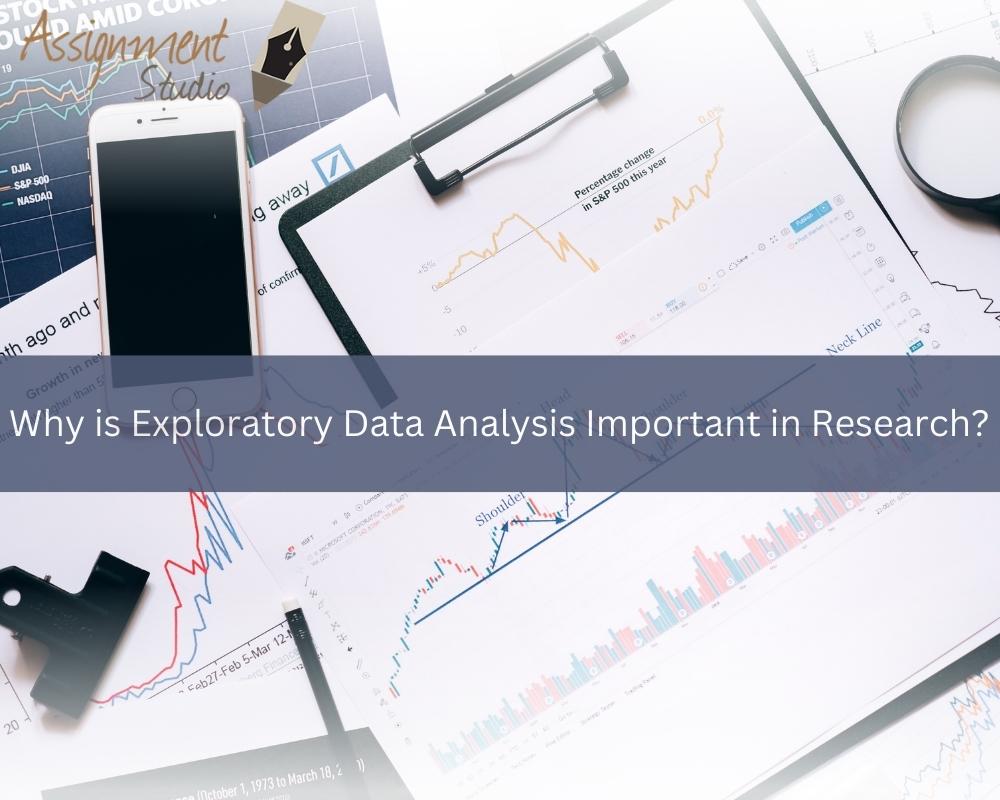
When you are conducting research, it’s important to analyse your data in a way that helps you understand it better. This is where exploratory data analysis comes in.
Exploratory data analysis is a process of examining your data in order to uncover patterns and relationships that you might not have been able to see otherwise. It’s a way of getting more insight into your data so that you can make better decisions about how to proceed with your research.
In this blog, we’ll talk about why exploratory data analysis is important in research, and we will also provide tips on how to get the most out of your data.
Table of Contents
What is Exploratory Data Analysis?
You might be wondering, what is exploratory data analysis? According to Wikipedia, it is defined as “a statistical approach that is used to analyse data in order to summarise main characteristics, often with visual methods”
Put simply, exploratory data analysis is the process of examining your data to find new and interesting insights. It’s a key part of the data mining process, and it’s essential for discovering hidden patterns and relationships in your data. Why is this important? Well, you can’t fix problems you don’t know about. By uncovering hidden patterns and relationships in your data, you can identify areas for improvement and target your efforts more effectively. This is essential for improving your business performance and achieving your goals. It is a way of summarising the data to find out what the main characteristics are. This can be done with many different methods, but the most commonly used method is visualising.
There are four primary types of EDA:
- Univariate non-graphical
- Univariate graphical
- Multivariate non graphical
- Multivariate graphical
How Exploratory Data Analysis Can be Used
Now that we’ve gone over what EDA is and why it’s important, let’s take a look at a few examples of how EDA can be used.
Identify potential problems:
When you’re looking at a dataset, you might notice something that doesn’t seem right. For example, there might be more missing values than you would expect, or the data might be unexpectedly skewed. These are potential red flags that could indicate errors in the data collection process.
Get to know your data:
Exploratory data analysis is a great way to get to know your data better. You can take a look at the distribution of values, see if there are any outliers, and get a feel for the overall structure of the data.
Visualise relationships:
One of the most powerful aspects of EDA is its ability to help you visualise relationships between variables. This can be done using scatter plots, line graphs, or other types of visualisations.
Generate hypotheses:
Once you’ve explored the data and seen what’s there, you can start generating hypotheses about how different variables might be related. This can give you ideas for further analysis of experiments.
Important of Exploratory Data Analysis
Have you ever been in a situation where you have collected data but don’t quite know what to do with it? Well, this is where exploratory data analysis comes in handy.
Exploratory data analysis is all about making sense of data. It’s a way of looking at data to see what patterns there are, what relationships exist between variables and which variables are important.
It’s an essential step in any research project because it allows you to get a better understanding of your data and how it can be used. Plus, it can help avoid making assumptions about your data that could lead to inaccurate results. Let’s see what functions and techniques you can perform with EDA tools:
- Clustering and Dimension reduction techniques can help in creating a graphical display of high-dimensional data that contains many variables.
- It provides univariate visualisation of a raw dataset in each field with summary statistics.
- Bivariate visualisations and summary statistics allow you to check the relationship between each variable in the dataset and the target variable that you are looking at.
- Multivariate Visualisations is used for mapping and understanding the interaction between different fields of data.
- K-means clustering is the most used approach for partitioning data. Each data in the dataset is assigned by K-means to just one of the newly generated clusters. The nearest cluster is chosen for a record or data point based on a distance or similarity measure.
- Predictive models (for example linear regression) that are used for statistics and to predict outcomes.
So next time you are stuck with a bunch of data, remember that exploratory data is your friend!
How to Perform Exploratory Data Analysis
There are a few different ways that you can go about performing exploratory data analysis. One way is to simply examine the data yourself and see if you can find any patterns or trends. Another way to perform exploratory data analysis is to use software to help you. There are a number of different software programs that can help you with this, and they vary in terms of price and functionality.
R Software Program
One popular option is R, which is a free software program that is designed specifically for statistical computing. R is a powerful tool that can help you to perform exploratory data analysis, and it is also relatively easy to use.
SPSS
Another option is SPSS, which is a commercial software program that offers a more user-friendly interface. SPSS is a good choice if you are new to exploratory data analysis, as it will provide you with step-by-step instructions on how to perform various analyses.
We hope that you find the blog helpful and it cleared up any query you may have about Exploratory Data Analysis.







